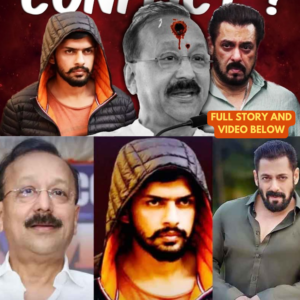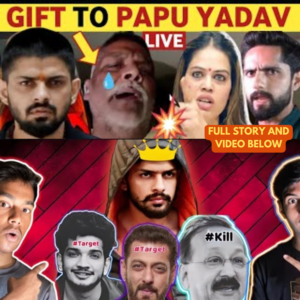In the ever-evolving landscape of India’s criminal underworld, a new chapter is unfolding, marked by the dramatic confrontation between notorious gangster Lawrence Bishnoi and the infamous Bihar don, Pappu Yadav. This rivalry has escalated recently, with Bishnoi’s gang issuing a chilling ultimatum to Yadav, threatening to eliminate his crew within a mere 24 hours. The tension underscores the precarious balance of power among India’s criminal factions.
The conflict ignited on October 12, when Bishnoi’s gang claimed responsibility for the murder of Baba Siddiqui. This high-profile assassination sent shockwaves through the underworld and raised alarms regarding the safety of various figures associated with Bollywood, including Salman Khan, who has found himself directly in Bishnoi’s crosshairs. The threats directed at Khan have sparked widespread media attention and public concern.
As the situation unfolds, Khan’s security has become a focal point. Reports indicate that his residence in Mumbai has tightened security measures, effectively issuing a no-visitor policy. This unprecedented response highlights the gravity of the threat posed by Bishnoi’s gang and the increasing fears among high-profile individuals in the entertainment industry.
The media frenzy surrounding the Baba Siddiqui murder and its implications for celebrity security has led to a flurry of interviews and discussions. Notably, Khan’s bodyguard has even been invited to share insights on the matter, illustrating how deeply this incident resonates within public discourse. The atmosphere of fear and intrigue continues to capture the imagination of the media and the public alike.
In a curious turn, Pappu Yadav has found himself on the defensive as the threats from Bishnoi’s gang intensify. Once a figure of immense power in Bihar, Yadav is now facing scrutiny and demands for increased security from none other than Amit Shah, the Minister of Home Affairs. This stark reversal of fortunes paints a vivid picture of the changing dynamics within the criminal landscape.
Yadav’s reaction speaks volumes about his current state of affairs. The former don, who has a storied history of criminal exploits and political machinations, now appears vulnerable. Reports indicate that he visibly flinches at the mention of Bishnoi’s name during press conferences, a far cry from his previous bravado in the face of threats.
Historically, Pappu Yadav’s rise to power was marked by a reign of terror in Bihar during the 1990s. His political career, which saw him serve multiple terms as a Member of Parliament, was underpinned by a notorious reputation for violence and manipulation. Allegations of booth capturing and direct involvement in criminal activities have long haunted his legacy.
As the current rivalry unfolds, it serves as a stark reminder of the violent past that has shaped figures like Yadav. With over thirty serious criminal cases to his name, including infamous incidents of gun violence, his past looms large over his present challenges. The question arises: can he navigate the treacherous waters of his newfound vulnerability?
In contrast, Lawrence Bishnoi has emerged as a formidable force within the underworld, commanding fear and respect. His gang’s brazen actions signal a resurgence of organized crime in India, a phenomenon that has far-reaching implications for law and order. As rival factions clash, the stakes have never been higher for those entrenched in this dangerous game.
Ultimately, the rivalry between Bishnoi and Yadav encapsulates a broader narrative of power, fear, and the ever-shifting landscape of organized crime in India. As this story continues to unfold, observers remain captivated by the twists and turns that define the lives of these infamous figures. The saga of Lawrence Bishnoi and Pappu Yadav not only reflects their personal battles but also serves as a window into the complex world of crime, politics, and public perception in contemporary India.
.
.
.
.
News
Amitabh Bachchan behaved badly with his daughter-in-law Aishwarya Rai | Amitabh IGNORE Aishwarya Rai
In recent weeks, a wave of speculation has emerged suggesting that all may not be well between former Miss World Aishwarya Rai and the iconic Bachchan family. This speculation has captured the attention of fans and the media, as rumors…
Amitabh gave a message to daughter-in-law Aishwarya Rai, said “No matter how your house is, it is yours”
Amitabh Bachchan, the iconic figure of Indian cinema, has a longstanding tradition of engaging with his audience through social media. He often shares reflections on his life, career, and personal philosophies. Recently, a particular post of his has stirred significant…
Salman Khan vs Lawrence Bishnoi | Why it is Happening? |
Salman Khan vs Lawrence Bishnoi | Why it is Happening? | The tension between Bollywood superstar Salman Khan and gangster Lawrence Bishnoi has become a hot topic in recent news. This clash is not just a simple feud; it embodies…
LAWRENCE BISHNOI VS SALMAN KHAN, PAKISTANI PUBLIC REACTION AFTER NADEEM KHAN VIRAL VIDEO, REAL TV
The recent controversy involving Bollywood superstar Salman Khan and Lawrence Bishnoi has sparked intense discussions across communities, especially concerning allegations of animal cruelty. The speaker, representing a particular community, emphasizes that if there is evidence that Khan has harmed a…
LAWRENCE BISHNOI’S DIWALI GIFT TO PAPU YADAV LIVE, AFTER NADEEM KHAN & SALMAN KHAN, LATEST NEWS
In a recent live discussion, significant attention was drawn to the ongoing tensions surrounding Pappu Yadav and Lawrence Bishnoi, especially in light of recent developments involving prominent figures like Nadeem Khan and Salman Khan. The speaker began by addressing the…
Zubair Khan Interview On Salman Khan SCARED Of Lawrence Bishnoi After Baba Siddique News EXCLUSIVE
In a recent interview, Zubair Khan discussed the ongoing tensions between Bollywood star Salman Khan and gangster Lawrence Bishnoi. Zubair asserted that Khan seems to be living in fear of Bishnoi, suggesting that even mundane activities require the assistance of…
End of content
No more pages to load











